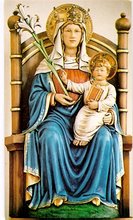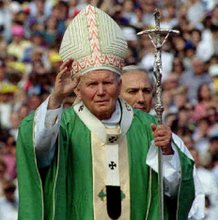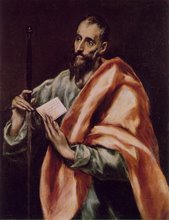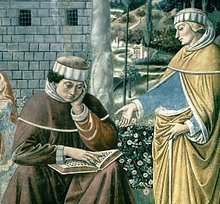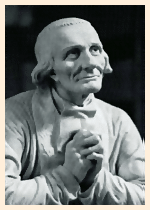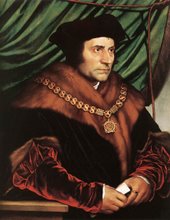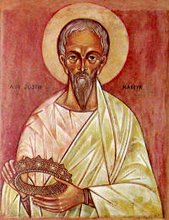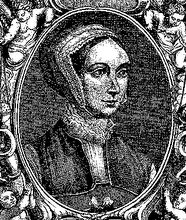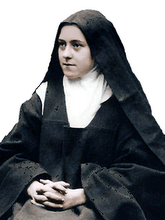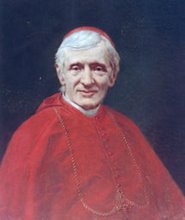Robert Cardinal Sarah
Prefect of the Congregation for Divine Worship
and the Discipline of the Sacraments
Text for Synod on the Family, October 2015
Your Holiness, Your Eminences, Your Excellencies, participants of the Synod,
I propose these three thoughts:
1) More transparency and respect among us
I feel a strong need to invoke the Spirit of Truth and Love, the source of parresia in speaking and humility in listening, who alone is capable of creating true harmony in plurality.
I say frankly that in the previous Synod, on various issues one sensed the temptation to yield to the mentality of the secularized world and individualistic West. Recognizing the so-called “realities of life” as a locus theologicus means giving up hope in the transforming power of faith and the Gospel. The Gospel that once transformed cultures is now in danger of being transformed by them. Furthermore, some of the procedures used did not seem aimed at enriching discussion and communion as much as they did to promote a way of seeing typical of certain fringe groups of the wealthiest churches. This is contrary to a poor Church, a joyously evangelical and prophetic sign of contradiction to worldliness. Nor does one understand why some statements that are not shared by the qualified majority of the last Synod still ended up in the Relatio and then in the Lineamenta and the Instrumentum laboriswhen other pressing and very current issues (such as gender ideology) are instead ignored.
The first hope is therefore that, in our work, there by more freedom, transparency and objectivity. For this, it would be beneficial to publish the summaries of the interventions, to facilitate discussion and avoid any prejudice or discrimination in accepting the pronouncements of the synod Fathers.
2) Discernment of history and of spirits
A second hope: that the Synod honor its historic missionand not limit itself to speaking only about certain pastoral issues (such as the possible communion for divorced and remarried) but help the Holy Father to enunciate clearly certain truths and useful guidance on a global level. For there are new challenges with respect to the synod celebrated in 1980. A theological discernment enables us to see in our time two unexpected threats (almost like two “apocalyptic beasts”) located on opposite poles: on the one hand, the idolatry of Western freedom; on the other, Islamic fundamentalism: atheistic secularism versus religious fanaticism. To use a slogan, we find ourselves between “gender ideology and ISIS”. Islamic massacres and libertarian demands regularly contend for the front page of the newspapers. (Let us remember what happened last June 26!). From these two radicalizations arise the two major threats to the family: its subjectivist disintegration in the secularized West through quick and easy divorce, abortion, homosexual unions, euthanasia etc. (cf. Gender theory, the ‘Femen’, the LGBT lobby, IPPF …). On the other hand, the pseudo-family of ideologized Islam which legitimizes polygamy, female subservience, sexual slavery, child marriage etc. (cf. Al Qaeda, Isis, Boko Haram ...)
Several clues enable us to intuit the same demonic origin of these two movements. Unlike the Spirit of Truth that promotes communion in the distinction (perichoresis), these encourage confusion (homo-gamy) or subordination (poly-gamy). Furthermore, they demand a universal and totalitarian rule, are violently intolerant, destroyers of families, society and the Church, and are openly Christianophobic.
“We are not contending against creatures of flesh and blood ….” We need to be inclusive and welcoming to all that is human; but what comes from the Enemy cannot and must not be assimilated. You can not join Christ and Belial! What Nazi-Fascism and Communism were in the 20th century, Western homosexual and abortion Ideologies and Islamic Fanaticism are today.
3) Proclaim and serve the beauty of Monogamy and the Family
Faced with these two deadly and unprecedented challenges (“homo-gamy” and “poly-gamy”) the Church must promote a true “epiphany of the Family.” To this both the Pope (as spokesman of the Church) may contribute, and individual Bishops and Pastors of the Christian flock: that is, “the Church of God, which he has obtained with his own blood” (Acts: 20:28).
We must proclaim the truth without fear, i.e. the Plan of God, which is monogamy in conjugal love open to life. Bearing in mind the historical situation just recalled, it is urgent that the Church, at its summit, definitively declare the will of the Creator for marriage. How many people of good will and common sense would join in this luminous act of courage carried out by the Church!
Together with a strong and clear Word of the Supreme Magisterium, Pastors have the mission of helping our contemporaries to discover the beauty of the Christian family. To do this, it must first promote all that represents a true Christian Initiation of adults, for the marriage crisis is essentially a crisis of God, but also a crisis of faith, and this is an infantile Christian initiation. Then we must discern those realities that the Holy Spirit is already raising up to reveal the Truth of the Family as an intimate communion in diversity (man and woman) that is generous in the gift of life. We bishops have the urgent duty to recognize andpromote the charisms, movements, and ecclesial realities in which the Family is truly revealed, this prodigy of harmony, love of life and hope in Eternity, this cradle of faith and school charity. And there are so many realities offered by Providence, together with the Second Vatican Council, in which this miracle is offered.



































